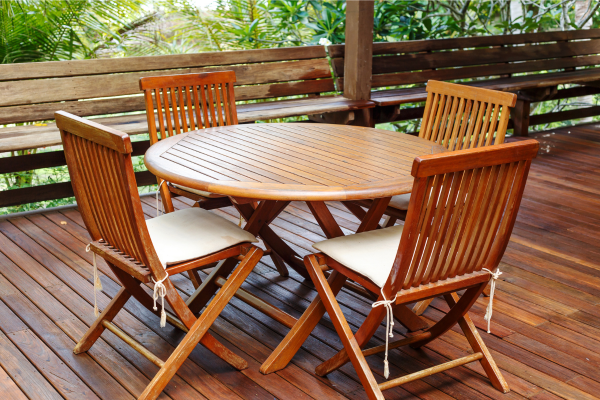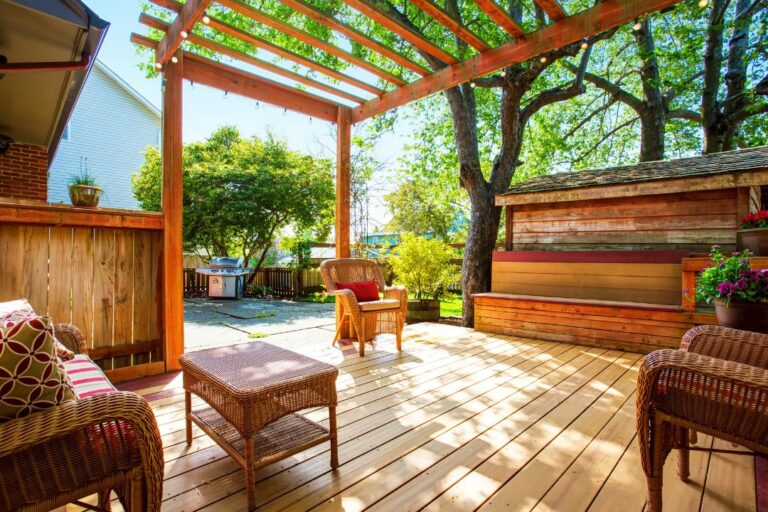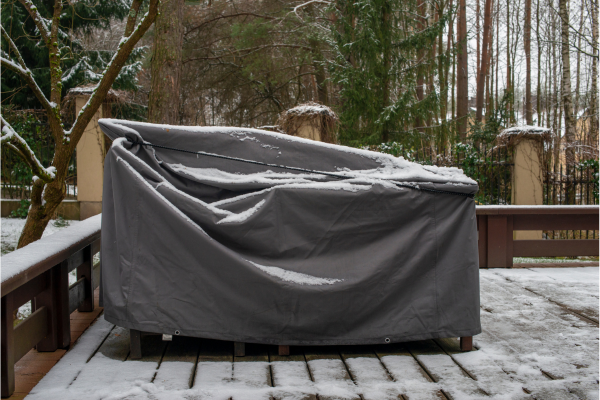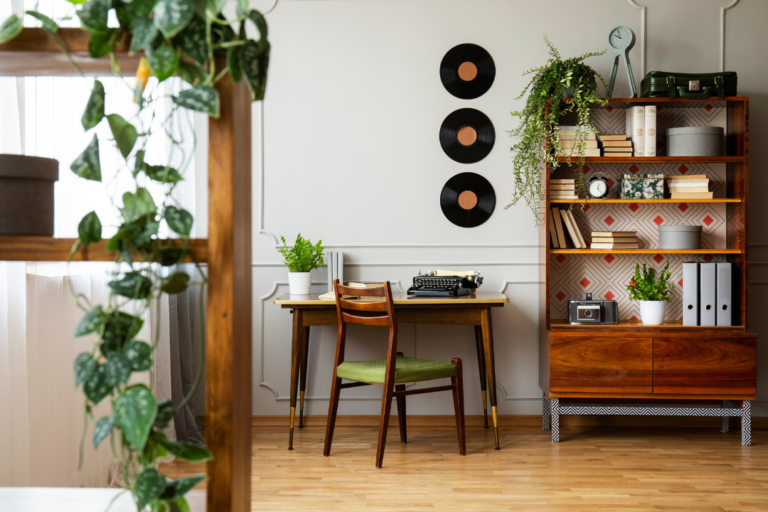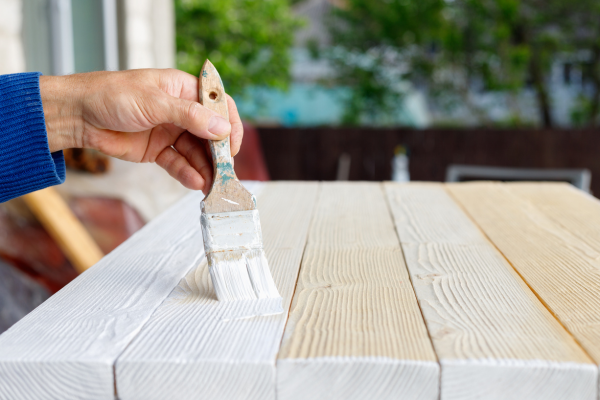5 Best Wood For Outdoor Furniture
If you’re looking to invest in some outdoor furniture, finding the best wood is key. You want a material that will withstand the elements and maintain its beauty over time.
When it comes to outdoor furniture, durability, and resilience are essential factors to consider. While many options are available, some woods are highly recommended for outdoor use.
These woods, known for their natural resistance to rot, decay, and insect damage, include teak, cedar, and acacia. With their excellent weather resistance and long-lasting qualities, these woods are an excellent choice for outdoor furniture that lasts years.
When choosing the best wood for your outdoor furniture, consider personal preferences and the overall aesthetic you’re aiming for. With its elegant golden hue, teak is highly sought after for its durability and resistance to moisture.
Conversely, Cedar offers a beautifully rustic appearance and is known for its ability to resist decay. With its warm shades and natural oils, Acacia is an affordable yet sturdy option.
Whichever wood you choose, treat and maintain regularly to prolong its lifespan and keep it looking its best. Now, furnish your outdoor space with the best wood for lasting and enjoyable gatherings.
Choosing the Best Wood for Outdoor Furniture
When it comes to outdoor furniture, finding the right type of wood is essential. The right wood can significantly affect the durability, maintenance, and overall lifespan of your furniture.
With so many options available, it can be overwhelming to determine the best wood for your outdoor furniture needs.
In this article, we will explore the various factors to consider when choosing wood for outdoor furniture, popular types of wood, the difference between treated and untreated wood, durability, and weather resistance, maintenance and longevity, cost, and sustainability.
Factors to Consider
Before diving into the different types of wood, it’s important to consider a few key factors that will play a role in your decision-making process.
Climate and Weather Conditions
One of the primary factors to consider is your area’s climate and weather conditions. Wood types react differently to weather elements such as heat, humidity, rain, and snow.
It’s important to choose a wood that can withstand the weather conditions in your region without deteriorating quickly.
Intended Usage
Another important factor to consider is the intended usage of your outdoor furniture. Will it be exposed to constant use, heavyweight, children, or pets?
Understanding how your furniture will be used will help you choose a wood that can handle its demands.
Budget
Finally, your budget will also play a role in your decision-making process. Some types of wood are more expensive than others, so it’s important to determine how much you are willing to spend on your outdoor furniture.
Popular Types of Wood
Several popular types of wood are commonly used for outdoor furniture. Each type has its unique characteristics and benefits. Let’s explore some of the most popular choices:
Teak Wood

Teak wood is renowned for its exceptional durability and natural weather resistance. It contains natural oils that protect it from rot, decay, and insect damage, making it an excellent choice for outdoor furniture.
Teak wood also features a beautiful golden hue that matures into an attractive silver-gray patina. While teak wood is pricier, its longevity and timeless beauty make it a worthwhile investment for outdoor furniture.
Cedar Wood
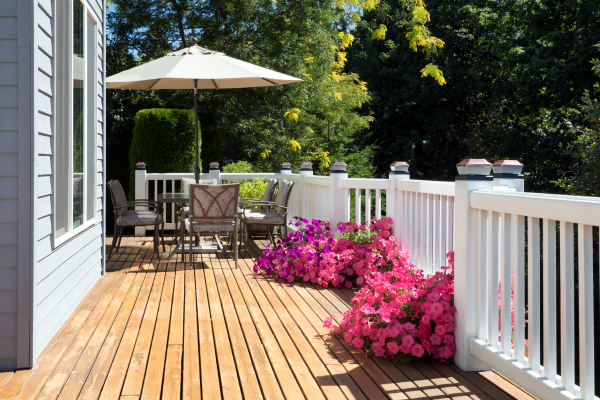
Cedar wood is another popular choice for outdoor furniture, thanks to its natural resistance to rot and insects. It has a pleasant aroma and a warm reddish-brown color that adds to its visual appeal.
Cedar wood is also known for its stability, making it less likely to warp or shrink. With proper maintenance, cedar furniture can last for many years, making it a reliable and cost-effective option.
Eucalyptus Wood
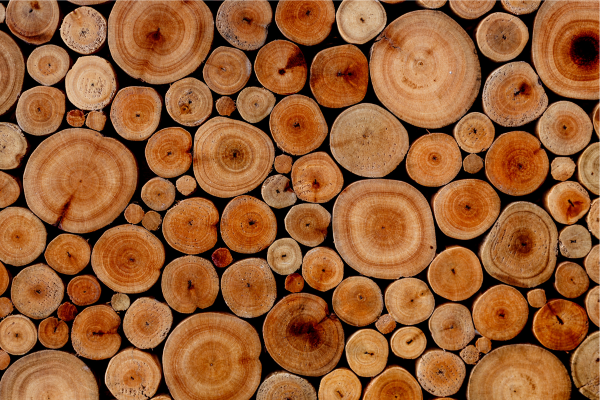
Eucalyptus wood is a sustainable and affordable option for outdoor furniture. It is known for its natural weather resistance and durability. Eucalyptus wood has a beautiful grain pattern and a warm reddish-brown color that resembles teak.
While it may require slightly more maintenance than teak or cedar, eucalyptus furniture can still provide many years of enjoyment with proper care.
Redwood
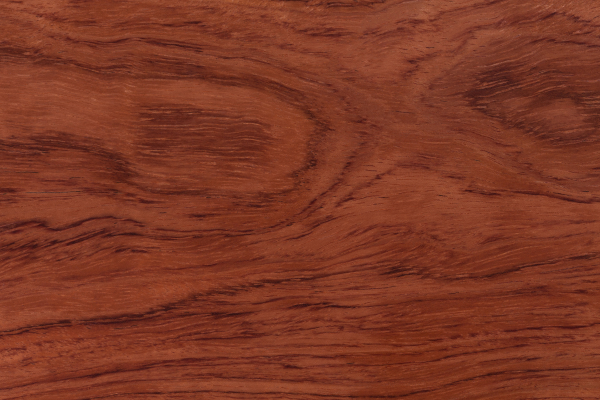
Redwood is a popular choice for outdoor furniture due to its natural resistance to decay and durability. It has a rich reddish-brown color and a straight-grain pattern that adds to its aesthetic appeal.
Redwood furniture requires regular maintenance to protect it from the elements, but it can last for decades with proper care.
Pine
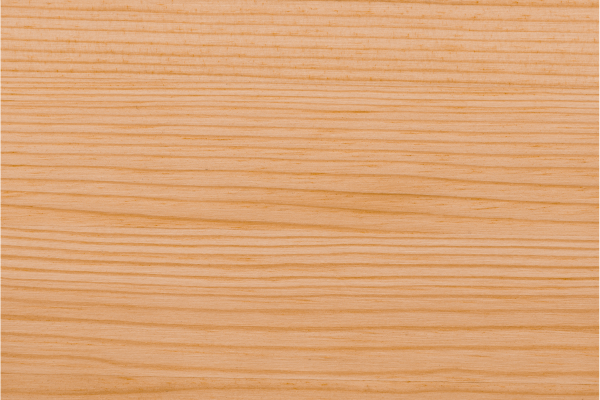
Pine is a budget-friendly choice for outdoor furniture. While it is not as naturally weather-resistant as teak or cedar, pine furniture can still be suitable for those on a tight budget.
Pine furniture can withstand outdoor conditions reasonably well with proper sealing and regular maintenance. However, it may not last as long as other types of wood, so it is essential to consider the trade-off between cost and longevity.
Treated vs. Untreated Wood
When selecting wood for outdoor furniture, you must decide between treated and untreated wood. Here are some critical considerations for each option:
Benefits of Treated Wood
Treated wood has been chemically treated to enhance its rot, decay, and insect damage resistance. It provides added protection against moisture and prolongs the lifespan of the furniture.
Treated wood is ideal for areas with high humidity or significant insect activity, as it offers an extra layer of defense.
Drawbacks of Treated Wood
While treated wood has its advantages, it does come with some drawbacks. The chemicals used in the treatment process can harm the environment, posing a potential risk to plants, animals, and humans.
There are also concerns about the long-term effects of these chemicals on human health. In addition, the treatment process can alter the appearance of the wood, resulting in a less natural look.
Benefits of Untreated Wood
Untreated wood provides a more natural and authentic look, allowing the beauty of the wood to shine through. It also eliminates concerns about harmful chemicals and their impact on the environment.
Untreated wood can be sealed with a protective finish to enhance its natural weather resistance and durability.
Drawbacks of Untreated Wood
Wood is more susceptible to rot, decay, and insect damage without treatment. It may require more frequent maintenance and care to ensure its longevity. Depending on the type of wood, weather exposure, and usage, untreated wood may deteriorate faster than treated wood.
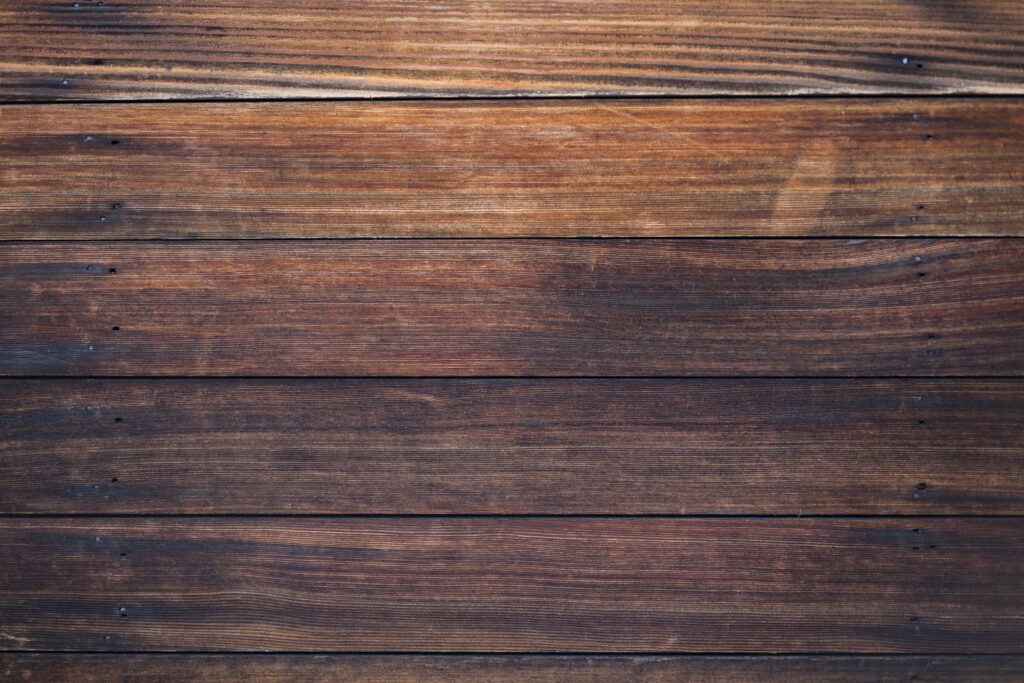
Durability and Weather Resistance
The durability and weather resistance of the wood are crucial factors in determining its suitability for outdoor furniture. Let’s take a closer look at how different types of wood perform:
Teak Wood’s Exceptional Durability
Teak wood is renowned for its exceptional durability. It contains natural oils that help protect it from moisture, rot, and insect damage. Teak furniture can withstand even the harshest weather conditions, making it an excellent choice for outdoor use.
Cedar Wood’s Resistance to Rot and Insects
Cedar wood is naturally resistant to rot, decay, and insect damage. It contains natural oils that act as a deterrent for insects, providing additional protection for outdoor furniture.
Cedar furniture can withstand the elements and maintain its strength and durability.
Eucalyptus Wood’s Natural Weather Resistance
Eucalyptus wood is known for its natural weather resistance. It is less likely to warp or crack when exposed to moisture or extreme temperature changes.
While eucalyptus wood is less resistant to decay than teak or cedar, it can withstand outdoor conditions reasonably well with proper maintenance.
Redwood’s Natural Resistance to Decay
Redwood is highly resistant to decay and insect damage. Its natural tannins act as a defense mechanism against rot, making it a durable choice for outdoor furniture.
Regular maintenance, such as sealing and staining, can further enhance its natural resistance and prolong its lifespan.
Pine’s Susceptibility to Weather Damage
Pine is more susceptible to weather damage compared to other types of wood. It is a softwood that can easily absorb moisture, leading to warping, cracking, and decay.
Proper sealing and regular maintenance are essential to protect pine furniture from the elements and extend its lifespan.
Maintenance and Longevity
Understanding the maintenance requirements and longevity of the wood is crucial in ensuring the longevity of your outdoor furniture. Here’s an overview of each type of wood:
Teak Wood’s Low Maintenance Requirements
Teak wood requires minimal maintenance to keep it looking beautiful. Its natural oils protect against moisture and insects, reducing the need for regular sealing or staining.
Over time, teak wood develops a silver-gray patina, adding character to the furniture. However, if you prefer to maintain the original golden hue, regular cleaning and applying teak oil are recommended.
Cedar Wood’s Easy Maintenance and Longevity
Cedar wood is relatively easy to maintain compared to other types of wood. Regular cleaning and applying a protective finish can help maintain its natural beauty and extend its lifespan.
With proper care, cedar furniture can last for many years, providing an excellent return on investment.
Eucalyptus Wood’s Moderate Maintenance Needs
Eucalyptus wood requires moderate maintenance to preserve its appearance and durability. Regular cleaning, sealing, and periodic oiling are recommended to protect it from the elements and maintain its natural color.
With proper care, eucalyptus furniture can provide many years of outdoor enjoyment.
Redwood’s Moderate Maintenance Requirements
Redwood furniture requires regular maintenance to protect it from the elements. Periodic sealing and staining can help maintain its natural beauty and prolong its lifespan.
With proper care, redwood furniture can withstand outdoor conditions and provide lasting durability.
Pine’s High Maintenance and Average Longevity
Pine furniture requires high maintenance compared to other types of wood. Sealing and protecting pine furniture with a weather-resistant finish is recommended to prevent moisture absorption and decay.
Regular staining and refinishing may be necessary to maintain its appearance and extend its lifespan. Pine furniture may not last as long as other wood types without proper care.

Cost
The cost of outdoor furniture is an important consideration for many people. Here’s a breakdown of the cost associated with each type of wood:
Teak Wood’s Expensive Price Tag
Teak wood is known for its quality and durability but comes with a higher price tag. The scarcity of teak wood and its popularity contribute to its expensive cost.
While it may require a larger upfront investment, the longevity and beauty of teak furniture make it a worthwhile choice for those willing to invest.
Cedar Wood’s Reasonable Cost
Cedar wood is a more affordable option compared to teak. It offers excellent durability and weather resistance at a reasonable price.
Cedar Furniture provides a cost-effective solution for long-lasting outdoor furniture without breaking the bank.
Eucalyptus Wood’s Affordable Option
Eucalyptus wood is an affordable option for outdoor furniture. It provides good durability and weather resistance at a fraction of the cost of teak or cedar.
Eucalyptus furniture offers a budget-friendly choice without compromising on quality and aesthetic appeal.
Redwood’s Costly Investment
Redwood furniture tends to be on the pricier side due to its durability and resistance to decay. Its high demand and limited availability contribute to its higher cost.
While it may require a more significant upfront investment, redwood furniture can provide long-lasting durability and timeless beauty.
Pine’s Budget-Friendly Choice
Pine furniture is the most budget-friendly option compared to the other types of wood. Its affordability makes it an attractive choice for those on a tight budget.
However, it’s important to consider that pine furniture may require more frequent maintenance and may not last as long as other wood types.
Sustainability
Sustainability is a growing concern in today’s world. Here’s a look at the sustainability of each type of wood:
Teak Wood’s Sustainable Certification
Teak wood is known for its sustainability. Look for teak wood certified by organizations such as the Forest Stewardship Council (FSC) to ensure that it has been responsibly sourced.
This certification ensures that the teak wood comes from legally and sustainably managed forests.
Cedar Wood’s Eco-Friendliness
Cedar wood is considered an eco-friendly choice for outdoor furniture. Cedar trees are abundant and replenished quickly, making it a sustainable resource. In addition, cedar furniture can be recycled or repurposed, minimizing waste.
Eucalyptus Wood’s Renewable Source
Eucalyptus wood comes from fast-growing trees that can be sustainably harvested. With proper forest management practices, eucalyptus wood can be a renewable and environmentally friendly choice for outdoor furniture.
Redwood’s Sustainable Harvesting Practices
Redwood furniture is a sustainable choice when sourced from well-managed forests. Sustainable harvesting practices, such as selective cutting and reforestation, ensure that the redwood trees are not depleted and can continue to grow for future generations.
Pine’s Mixed Sustainability
The sustainability of pine wood depends on where and how it is sourced. Pine trees can be sustainably harvested from well-managed forests, but it is essential to ensure that the wood comes from reputable sources.
Look for pine wood certified by organizations such as the Sustainable Forestry Initiative (SFI) to promote responsible forest management.
Teak Wood
Teak wood is one of the most popular choices for outdoor furniture due to its exceptional durability and natural weather resistance. Let’s take a closer look at its origins, characteristics, benefits, drawbacks, and applications:
Origins and Characteristics
Teak wood comes from the Tectona grandis tree, primarily found in Southeast Asia. It is a tropical hardwood known for its dense grain and natural oils.
When freshly cut, teak wood has a beautiful golden hue, which matures into an attractive silver-gray patina. It is highly resistant to moisture, rot, decay, and insect damage.
Benefits and Drawbacks
One of the significant benefits of teak wood is its exceptional durability. It can withstand extreme weather conditions, making it suitable for outdoor furniture use.
Teak wood requires minimal maintenance, thanks to its natural oils that protect it from moisture and pests. In addition to its durability, teak wood offers timeless beauty and a warm appearance that complements any outdoor space.
However, the main drawback of teak wood is its expensive price tag. Teak furniture tends to be pricier compared to other types of wood.
While the initial cost may be higher, teak furniture’s longevity and low maintenance requirements make it a valuable investment.
Applications and Furniture Types
Teak wood is versatile and can be used for various types of outdoor furniture, including dining sets, loungers, benches,
Adirondack chairs, and even boat decks. Its durability, weather resistance, and timeless appeal make it a popular choice for outdoor furniture enthusiasts who value quality and longevity.
Eucalyptus Wood
Eucalyptus wood is another popular choice for outdoor furniture, offering affordability and natural weather resistance.
Origins and Characteristics
Eucalyptus wood comes from the Eucalyptus tree, commonly found in Australia and other regions with a Mediterranean-like climate.
It is hardwood with a straight grain pattern and a warm reddish-brown color that resembles teak wood. Eucalyptus wood is known for its natural weather resistance and moderate durability.
Benefits and Drawbacks
One of the significant benefits of eucalyptus wood is its affordability. It is more budget-friendly than teak or cedar, making it accessible to a wider range of consumers.
Eucalyptus wood also offers natural weather resistance, making it suitable for outdoor furniture use. With proper maintenance, eucalyptus furniture can provide many years of outdoor enjoyment.
However, eucalyptus wood requires moderate maintenance compared to teak or cedar. Regular cleaning, sealing, and periodic oiling are necessary to protect it from the elements and maintain its natural color.
Failure to properly maintain eucalyptus furniture may result in faster deterioration and reduced longevity.
Applications and Furniture Types – Wood For Outdoor Furniture
Eucalyptus wood can be used for various outdoor furniture types, including dining sets, lounge chairs, benches, and coffee tables.
Its warm reddish-brown color and attractive grain pattern make it a visually appealing choice for outdoor spaces.
Eucalyptus furniture can add practicality and style to your outdoor area, whether used for a small patio or a spacious backyard.
In conclusion, when selecting the best wood for outdoor furniture, it’s important to consider factors such as climate, intended usage, and budget. Teak wood offers exceptional durability and a timeless appeal, while cedar wood provides natural resistance to rot and insects.
Eucalyptus wood offers affordability and natural weather resistance, making it a viable option for those on a budget. Understanding the difference between treated and untreated wood and the maintenance requirements and costs associated with each type is crucial in making an informed decision.
Lastly, considering the sustainability aspects of the wood can contribute to a more environmentally friendly choice. Whether you choose teak, cedar, eucalyptus, or any other type of wood, selecting the best wood for your outdoor furniture will ensure years of enjoyment and beauty in your outdoor living space.

